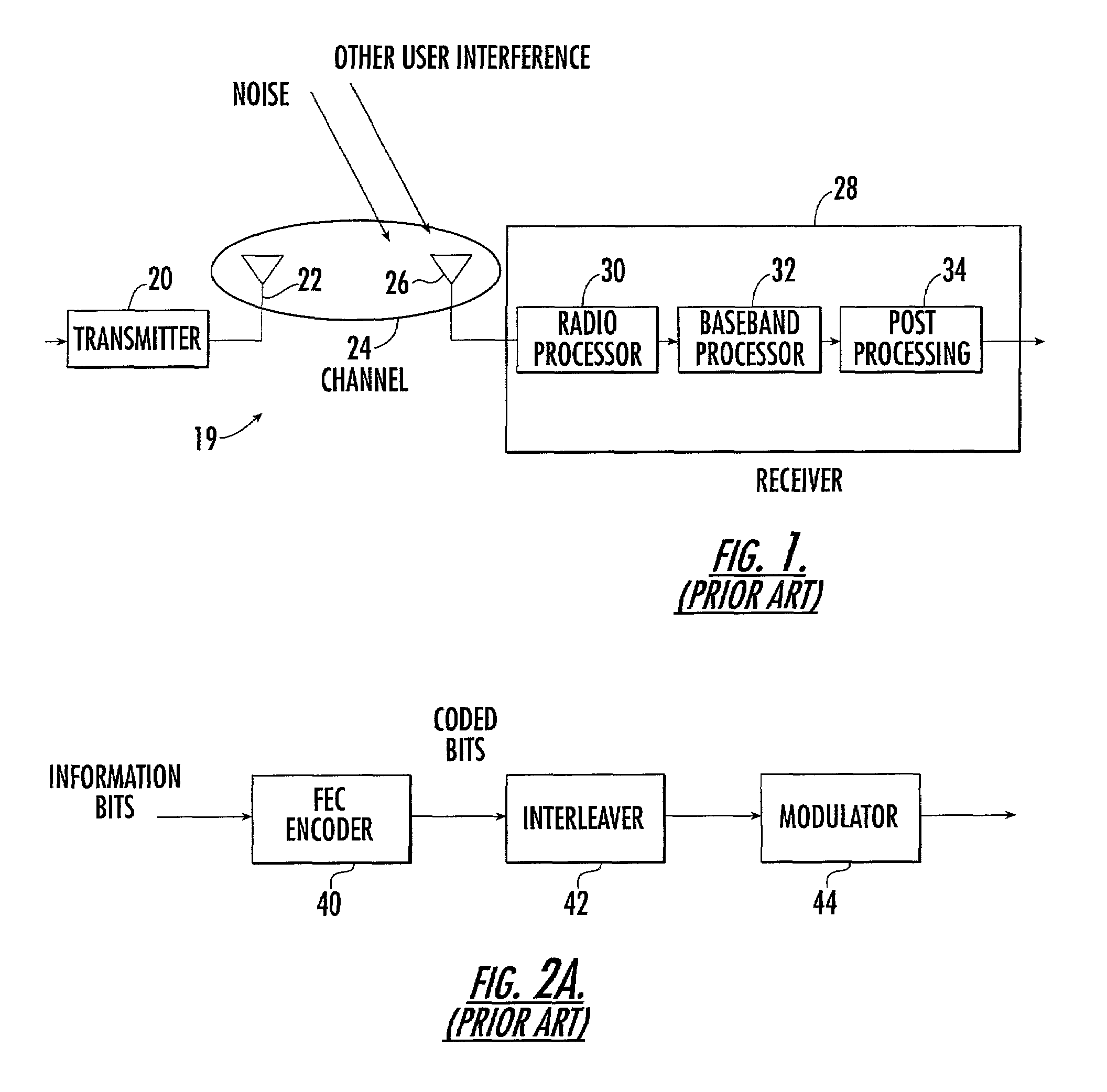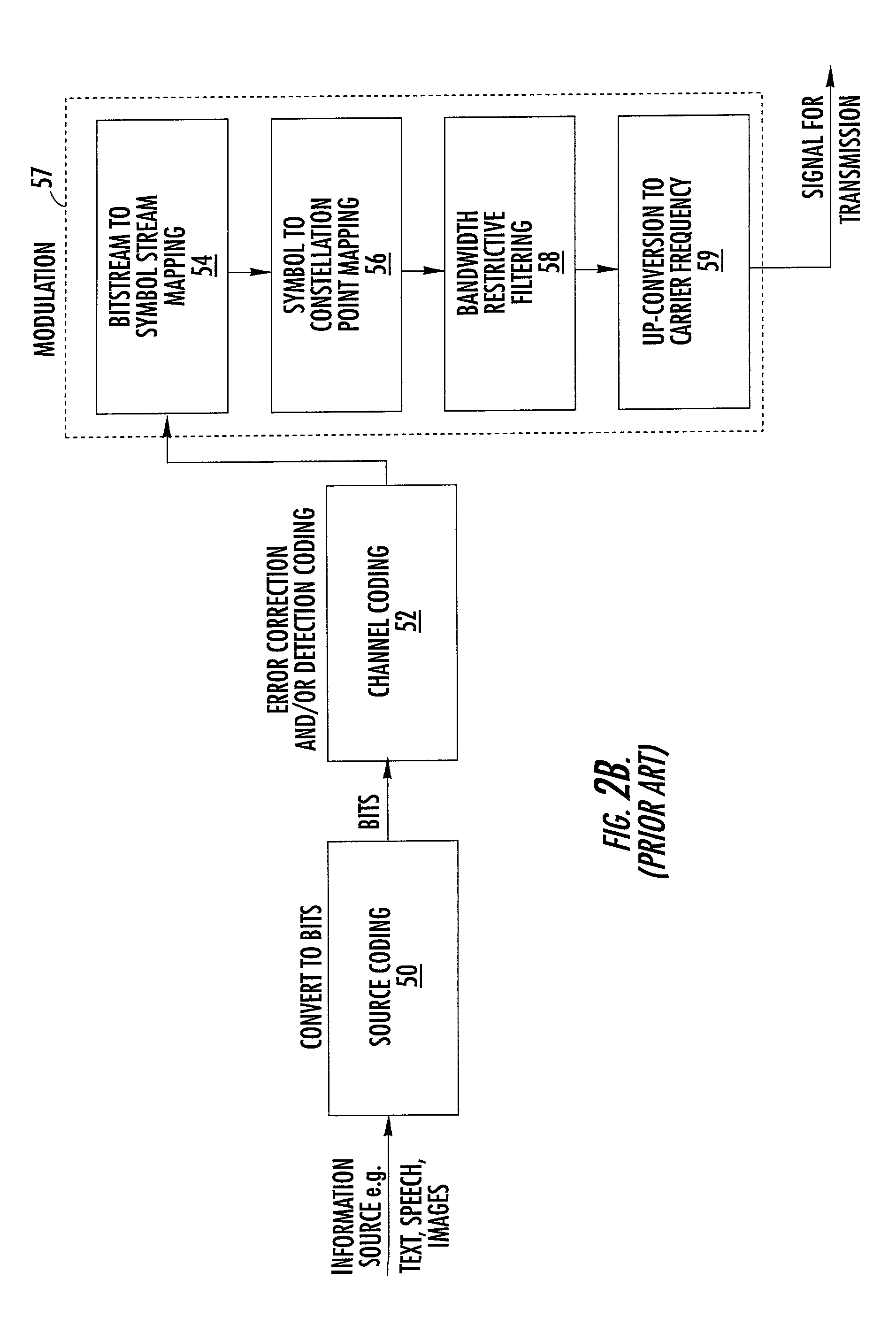Rate one coding and decoding methods and systems
a coding and decoding technology, applied in the field of signal communication, can solve problems such as increasing the sensitivity to bit errors, giving rise to complex, and reducing the sensitivity of bit errors, and achieving error protection only at the expense of increasing the bandwidth
- Summary
- Abstract
- Description
- Claims
- Application Information
AI Technical Summary
Benefits of technology
Problems solved by technology
Method used
Image
Examples
Embodiment Construction
[0035]The present invention now will be described more fully hereinafter with reference to the accompanying drawings, in which preferred embodiments of the invention are shown. This invention may, however, be embodied in many different forms and should not be construed as limited to the embodiments set forth herein; rather, these embodiments are provided so that this disclosure will be thorough and complete, and will fully convey the scope of the invention to those skilled in the art. As will be appreciated by those of skill in the art, the present invention may be embodied as methods or devices. Accordingly, the present invention may take the form of a hardware embodiment, a software embodiment or an embodiment combining software and hardware aspects.
[0036]The present invention will first be described with reference to the block diagram illustration of FIG. 5 which depicts a mobile terminal including an encoder / decoder in a wireless receiver according to embodiments of the present ...
PUM
 Login to View More
Login to View More Abstract
Description
Claims
Application Information
 Login to View More
Login to View More - R&D
- Intellectual Property
- Life Sciences
- Materials
- Tech Scout
- Unparalleled Data Quality
- Higher Quality Content
- 60% Fewer Hallucinations
Browse by: Latest US Patents, China's latest patents, Technical Efficacy Thesaurus, Application Domain, Technology Topic, Popular Technical Reports.
© 2025 PatSnap. All rights reserved.Legal|Privacy policy|Modern Slavery Act Transparency Statement|Sitemap|About US| Contact US: help@patsnap.com



